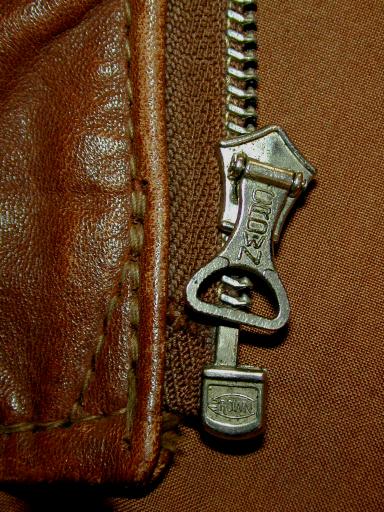Lesson 1. One of the first noticeable and easy details to find for inspection is the size. Vintage clothing WILL BE sized remarkably smaller than today's clothing. Two dresses with 25-inch waists vary in today's measurements; the vintage dress is marked as a size "4/6" while the current piece is marked as a "12." (These are estimations, every piece/designer will vary)
Lesson 2. Next, take a look at the fabric content. Today we have the luxury of stretch in our garments but the ladies of the 40s and 50s were not so comfortable. Polyester and spandex were not being used in these eras and most clothing was made from wool or cotton. Look at the waist, if there is stretch there be wary that this garment may come from the 80s or later. (Fun Fact: Lycra Spandex had its birth into the "professional" dance attire in the 1960s and helped bring to light stretchy, shiny and fabulous disco jeans-all the flare and none of the restrictions)
Lesson 3. Another easy giveaway is the zipper. Today's zippers are mostly plastic and coated to match the material of the garment. Vintage zippers are metal and the teeth are significantly larger; many are finished in gold or silver. An example of an authentic vintage zipper comes from the Crown Zipper Company made in the early 1950s:
Crown Zipper Used on a Military Bomber Jacket

acmedepot.com
Lesson 4. Labels within the Garment. Many nicer brands today have stiched labels-this coincide with vintage labels which were also stitched into the piece along with (usually) a paper sizing tag. Many vintage garments were made in the United States (I like that!) while today's clothes are manufactured in countries like China and the Philippines.
atomicredhead.com
Lesson 5. Trends are a fun indicator if you have a gem in your hands. Sillhouette was forever the focus for many designers. Pencil skirts, full skirts, raised hems, you could go on but all of these trends have something in common- a beautiful, slender, feminine shape that spanned several decades and is still appreciated today.

contentmentfarmantiques.com
This is a silk gown that showcases the sillhouette that paved the way for women's fashion. Another beautiful example is this navy 2-piece faille (woven fabric of silk, cotton or rayon) suit.

coutureallurevintage.com
vintagefashionguild.org
Most of these tips are just small diddies to assist you...and myself in hunting for true picturesque vintage jewels. I hope it helped even a smidge and of course have fun treasure hunting!
PS: (Here are some more gorgeous vintage pieces for your ennjoyment and inspiration!)

1937 Chanel

1950 Karen Stark/Harvey Berin

1970s Halston jumpsuit (yes please!)

1960 Lanvin/Paris

1971 Zandra Rhodes

1967 Pierre Balmain

